TPS SURVIVAL HORROR
1968, Beneath the streets of Paris, a horror awakens. Delve into the infested subway tunnels and prevent the unimaginable from rising to the surface

TERMINUS
LEVEL DESIGN - GAME DESIGN - SUPERVISEUR SOUND DESIGN
ABOUT THE GAME
Inspired by
Master's degree final project completed in 1 year and 4 months (full-time)
Unreal Engine, Perforce, Gsuite, Photoshop, Miro
Team of 11 people (junior level)
3 poles : Game Design, Game Art & Game Programmer
Dead Space & Resident Evil (Survival Horror)
The Order: 1886 & The Evil Within (Cinematic aspects)
The Last Of Us (Artistic aspects, Texturing, UI, etc...)
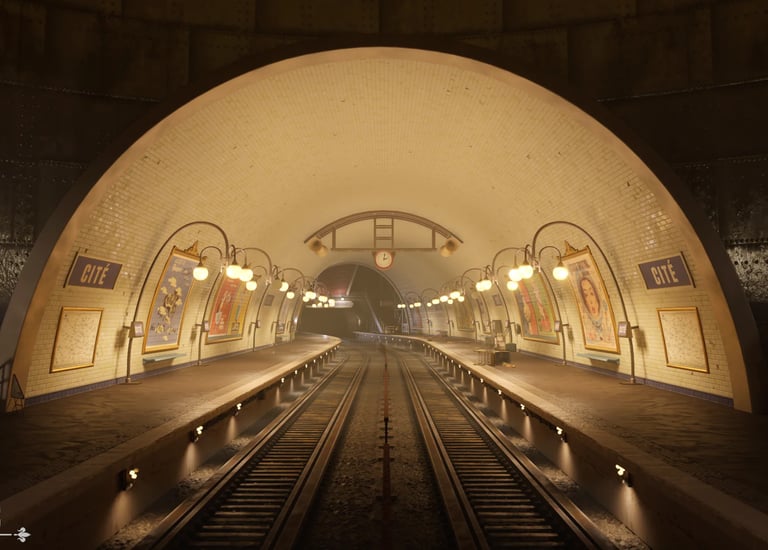

OVERVIEW
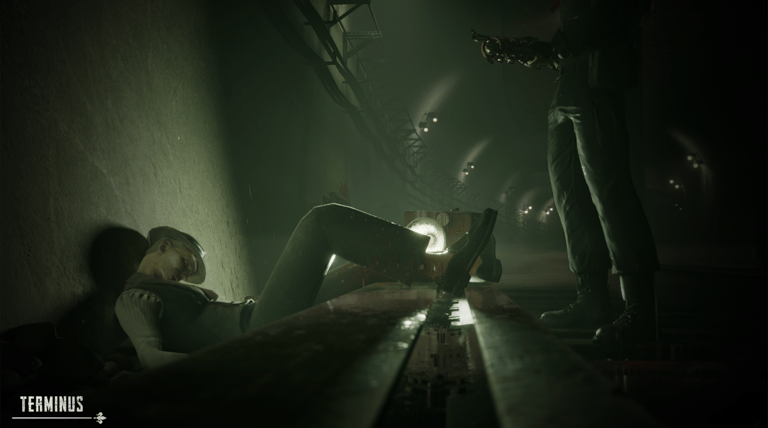

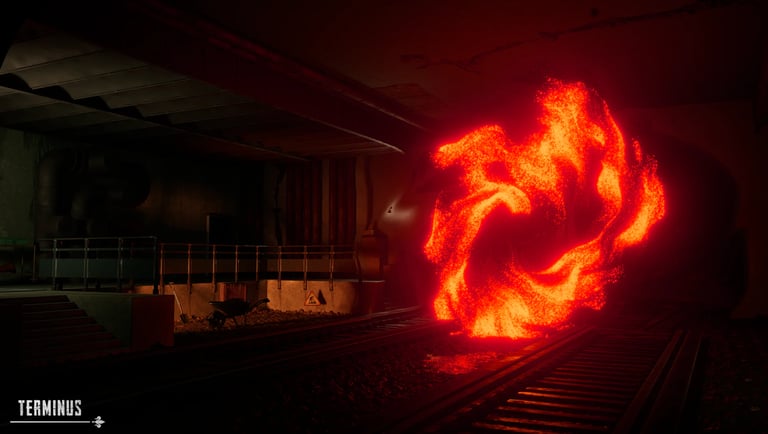

During this stage, I participated in brainstorming sessions and helped develop the GDD and other Level Design documents, which were useful for both the team and myself.
At the same time, I also carried out numerous exploratory tests on Unreal Engine maps, focusing on the character, their actions, GPEs and combat, as well as the architecture of the locations themselves.
During the level blockout, Unreal Engine's Modeling Tool served me well in creating shapes of varying complexity. I also used a lot of triplanar grid materials with different grayscale levels for Metrics and Art.
During construction, I prioritized important areas such as faults and narrative locations with landmarks and viewpoints that stand out from the rest. I also made extensive use of comfort and danger to design locations, making the experience more nuanced.
I bring as much useful design intent as possible to guide the player (lighting, materials, etc.), while also trying to think about the overall atmosphere and more artistic elements (fog, color, decals) that can reinforce my intentions and improve the experience. All of this provides a good foundation to discuss with the Art team.
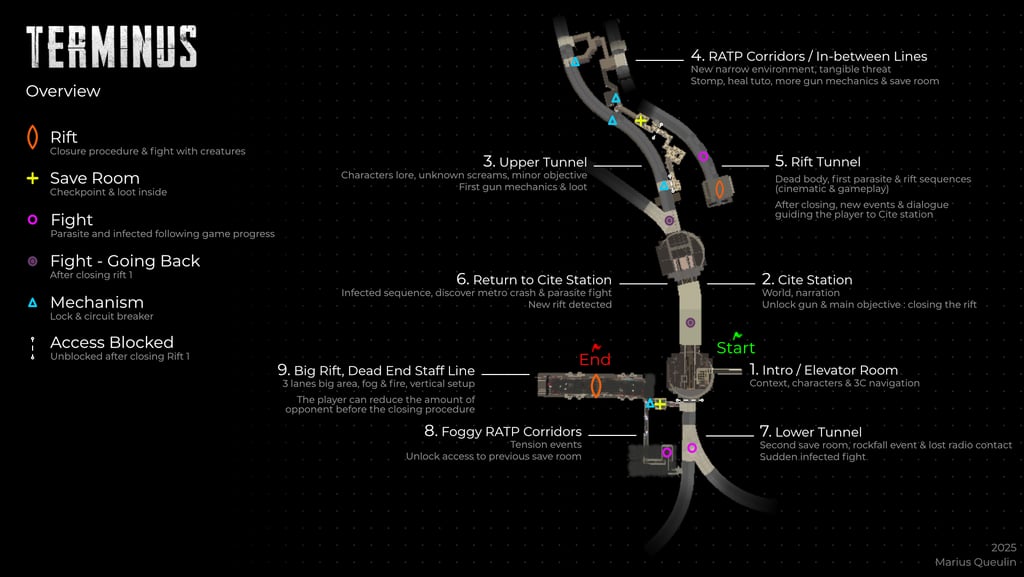

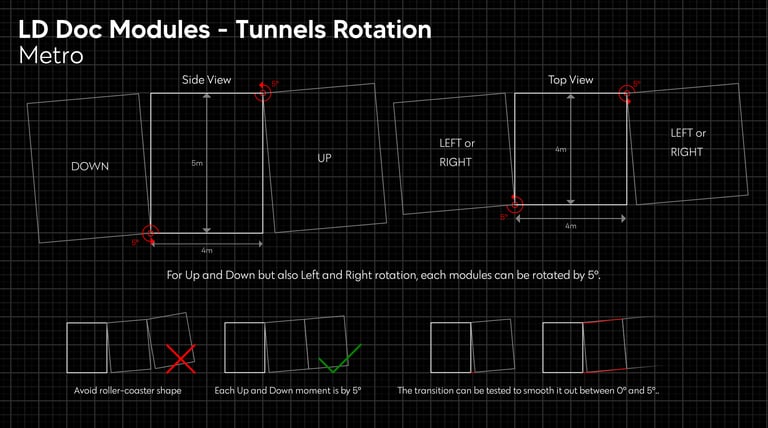

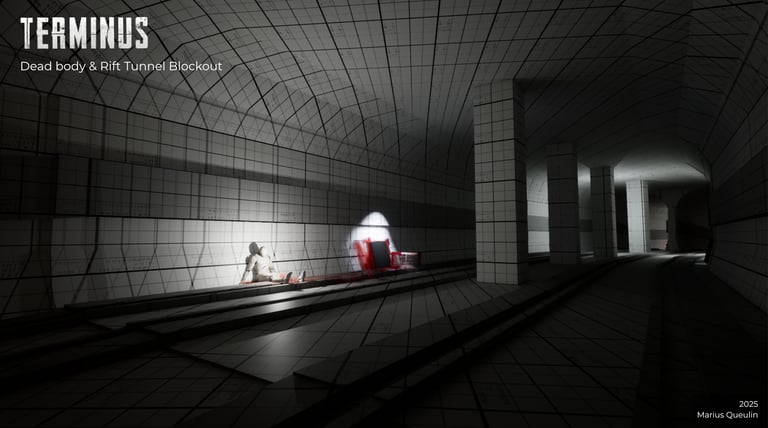

BREAKDoWN
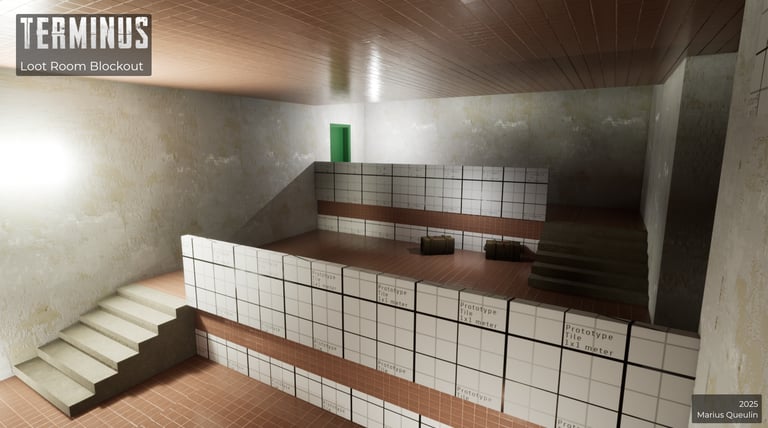

Gameplay video in the section below. Game duration: ~30 min.
Pré-Production
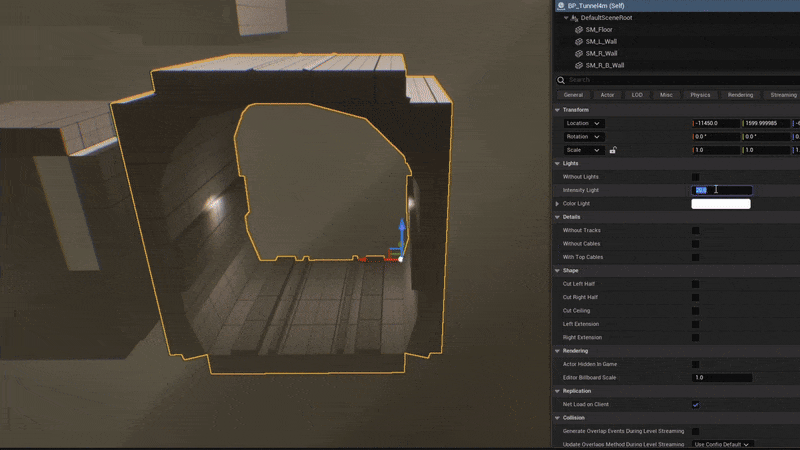

Scripting
In this project, I created a Blueprint tool that allowed me to block out tunnels and corridors in a modular way. This saved me time and gave me flexibility in building the levels.
I also created physical doors during the testing phases.
Then, I used and adjusted many Blueprint systems designed by other designers or programmers, such as the highly versatile Scriptable Events, as well as faults and Spawners, etc.
Collision, Physique & Nav Mesh
Blockout
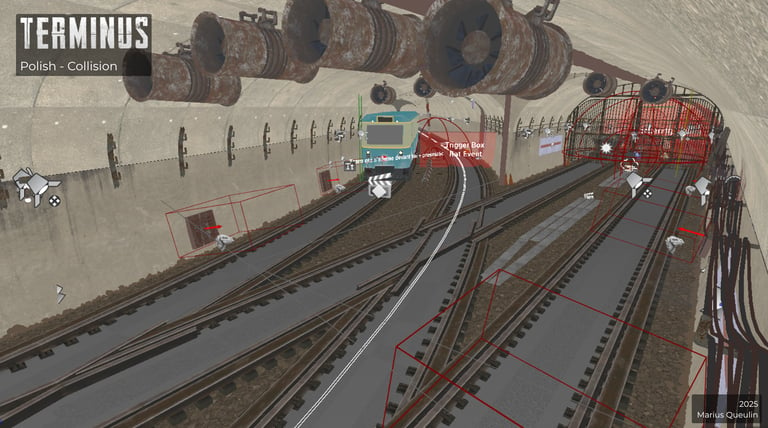

I place a lot of importance on the finishing touches of my levels, especially when the experience is meant to be realistic, as in TERMINUS. That's why I always try to adjust collisions, physical actors, and Nav Meshes.
The collisions were designed for the 3Cs, interactions (GPE/GPE or Objects) and AIs (creatures). After that, I tried my best to make them as accurate as possible with the fewest polygons and to justify them with graphic assets to minimize invisible walls.
The basic physics in Unreal can be chaotic. That's why we've limited its use by increasing the weight of physical actors and reducing their interactions with each other.
Nav Meshes were crucial to the functionality and visual appeal of the combat. Although still not perfect, we double-checked (preview & in-game) and restricted certain areas with modifiers to address issues with AI or instanced levels. Most of the time, it was collisions with other objects that caused problems.
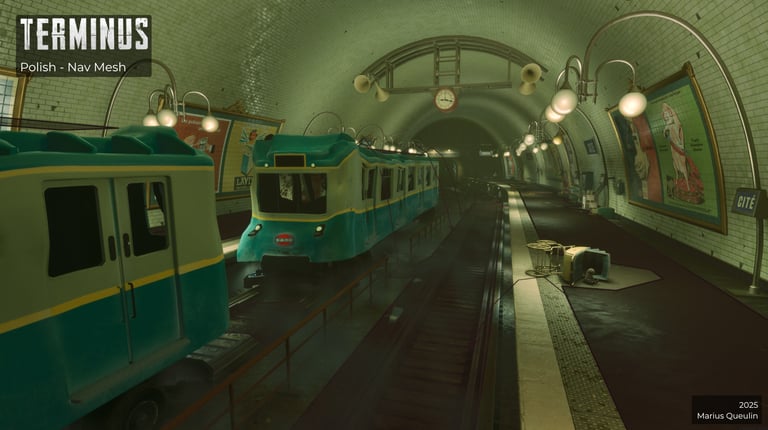

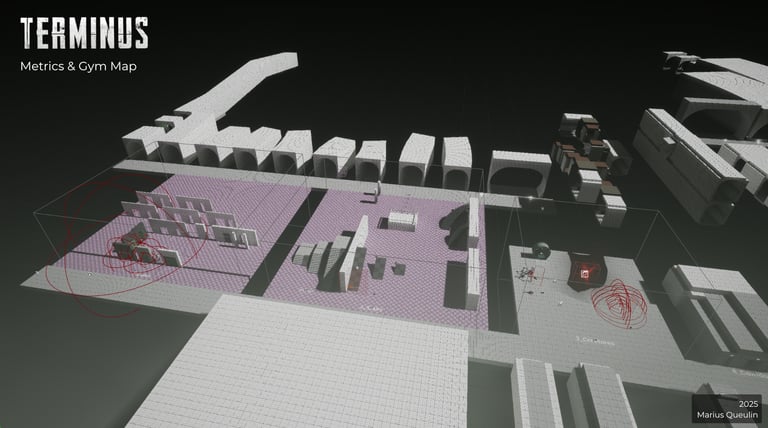


WALKTHROUGH
TERMINUS is my most successful project to date. It has been essential to my career path and has allowed me to reach the level of maturity I have today. Thanks to this experience, I feel ready to take on a junior position in the industry, even though it will be particularly demanding in 2025.
I had the opportunity to work on this project for over a year, as part of a team where we were responsible for every technical and creative decision. These decisions were not always easy or ideal, but it was the best way to learn.
Today, looking back on my role as Level Designer, I wish I had done less exploratory testing and locked down the levels earlier in order to improve their foundations more quickly. This would also have allowed me to focus more on each GPE and each combat, their learning curve and their appearance, to make the adventure feel more controlled.
Finally, I would have liked to incorporate more verticality and reduce certain overly linear moments, due to the nature of the environment. But that would have required much more time for architectural reflection and technical testing in relation to our other features.
In terms of Game Design, if we had had more time and experience, we would surely have thought things through more carefully to avoid certain traps and choices, and to consolidate the concept promoting the originality of each feature.